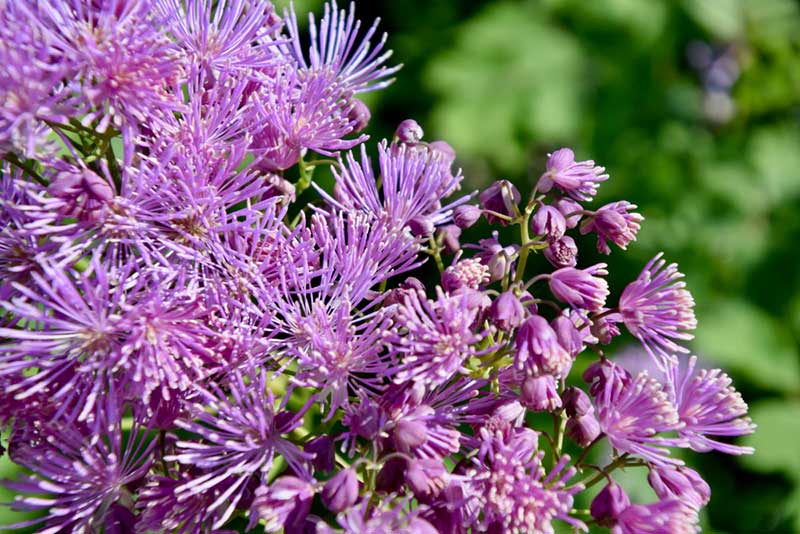The blossoms of the meadow rue are usually lavender, and the plant is highly prized for its pretty flower color and the unusual shape of them. The plant also comes in light pink and white, and the stems are a lovely purple in most varieties.
The flowers tend to start blooming in the late spring and continue through July. The plant reaches 2′ to 6′ tall, depending on the variety, and will grow in zones 5 through 9. With their 16″ to 18″ width, they make great flowers for small spaces as well as in borders.
Light and Temperature Requirements
Meadow rue will tolerate both are that get full sun and those that get partial sun. If you are in a warmer climate, these plants like some shade in the afternoons during the hottest months. The perfect place for these plants are in spaces where there is partial shade at certain times of the day and full sun in others. It is tolerant of high temperatures as long as the plant gets some shade from it and doesn’t have its soil dry out.
Watering
Meadow rue is a swampy plant that prefers its soil to be moist. If you have any wetland areas, they do well in those conditions. However, the soil should be able to drain well. They need to be watered often if you don’t get rain at least twice a week, but that water should be able to drain so that the roots are not sitting in water long term. The soil should hold onto a medium-amount of moisture, and the plant does not have to be dry in between waterings.

Soil & Fertilizing
The ideal soil for meadow rue is fertile soil that is moist as well as well-draining. If your soil isn’t good at holding onto moisture, you can mix some peat moss or perlite into the soil so that it will hold onto it longer. If you plant it in an area that drains well but is dry and/or sandy, it won’t do well and likely will die out during the winter. The soil itself should be humus and have plenty of organic material in it. If your chosen spot doesn’t have this, adding compost to the soil is the perfect way to add it. You can also try a balanced organic fertilizer to the soil to make it richer and more nutritious.
Deadheading and Pruning
If you don’t want the plant seeding new plants all around it, you can deadhead the flowers once they wilt. The meadow rue doesn’t require any pruning to keep it healthy. But, if you want to better control the plant, you can cut off the stems after they have flowered. As a perennial, stems will grow back the next spring. When pruning, be sure not to get the sap on your skin. It is an irritating substance. Every four or five years, you can divide clumps of meadow rue for planting elsewhere or simply to keep the plants from getting too wide.
Growing Tips
Heavy winds can do damage to this plant. If you have high winds coming, it’s best to cover them. This plant doesn’t have any special draw for insects, but it can develop rust and powdery mildew if it sits in water too long. There are many varieties of this plant, and some of them are quite tall. These varieties will need to be staked when they’re full grown to keep them from slumping over.



